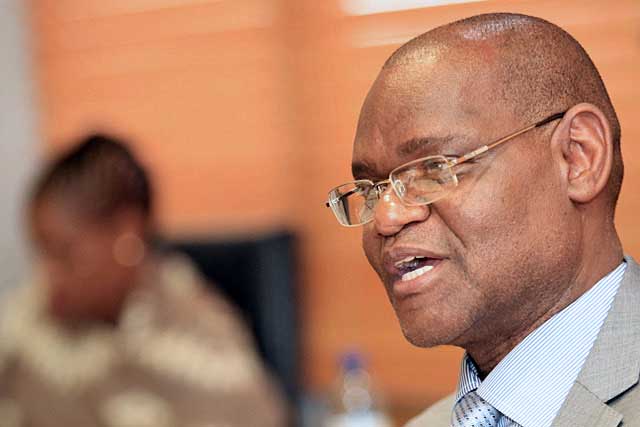GAZETTE REPORTER
At the end of June 2018, Botswana’s foreign exchange reserves amounted to P74.3 billion, a decrease of 0.5 percent from P74.7 billion in June 2017, Bank of Botswana has revealed.
Under the captaincy of Governor Moses Pelaelo, BoB announced that the decrease in the foreign exchange reserves mainly reflected foreign exchange outflows. In US Dollar (USD) terms, the reserves decreased by 2.7 percent from USD7.3 billion in June 2017 to USD7.1 billion in June 2018. The reserves decreased by 1.9 percent in Special Drawings Rights (SDR) terms from SDR5.2 billion to SDR5.1 billion in the same period. The import cover for goods and services as at the end of June 2018 was 18.3 months.
Botswana’s foreign reserves, which are kept in US Dollars, are usually affected by global currency volatilities, and in most times to the negative. BoB’s implementation of the exchange rate policy entails the basket weights of the Pula at 45 percent for the South African rand and 55 percent for the SDR and a 0.3 percent downward rate of crawl.
South Africa is Botswana’s largest trading partner. Botswana imports over P6 billion worth of goods from Africa’s superpower on a monthly basis.
A gradual downward adjustment of the annual rate of crawl seeks to minimise the risk of a further appreciation of the real effective exchange rate (REER). Bilaterally, the Pula appreciated by 0.4 percent against the South African rand according to the central bank, but depreciated by 0.5 percent against the SDR over the twelve months to July 2018. Over the same period, it depreciated by 0.8 percent against the British pound, 0.7 percent against the US dollar, 0.6 percent against the euro and 0.1 percent against the Japanese yen, while it appreciated by 0.9 percent against the Chinese renminbi. The movement of the Pula against the constituent SDR currencies largely reflects the performance of the South African rand against the SDR currencies. In the same review period, the rand depreciated against the SDR (by 0.9 percent) and all its constituent currencies, except the Chinese renminbi. It depreciated by 1.2 percent against both the British pound and the US dollar, 1 percent against the euro and 0.5 percent against the Japanese yen, while it appreciated by 0.4 percent against the Chinese renminbi. The rand depreciated against major currencies due to the global investor risk aversion amidst the emerging trade war between the United States and other countries (such as China, EU countries and Russia), according to research by the BoB
This, in turn, resulted in major financial outflows from emerging markets towards developed economies, says the central bank. South Africa is one of the most vulnerable emerging market economies to market re-adjustments. Furthermore, the rand weakened as investors continued to reposition long-term investment from risky assets in favour of investments in safe haven currencies such as the US dollar and Swiss franc, according to BoB.

